Have Questions About Sampling and Testing?
Download Our Guides to Get Answers to Your Questions
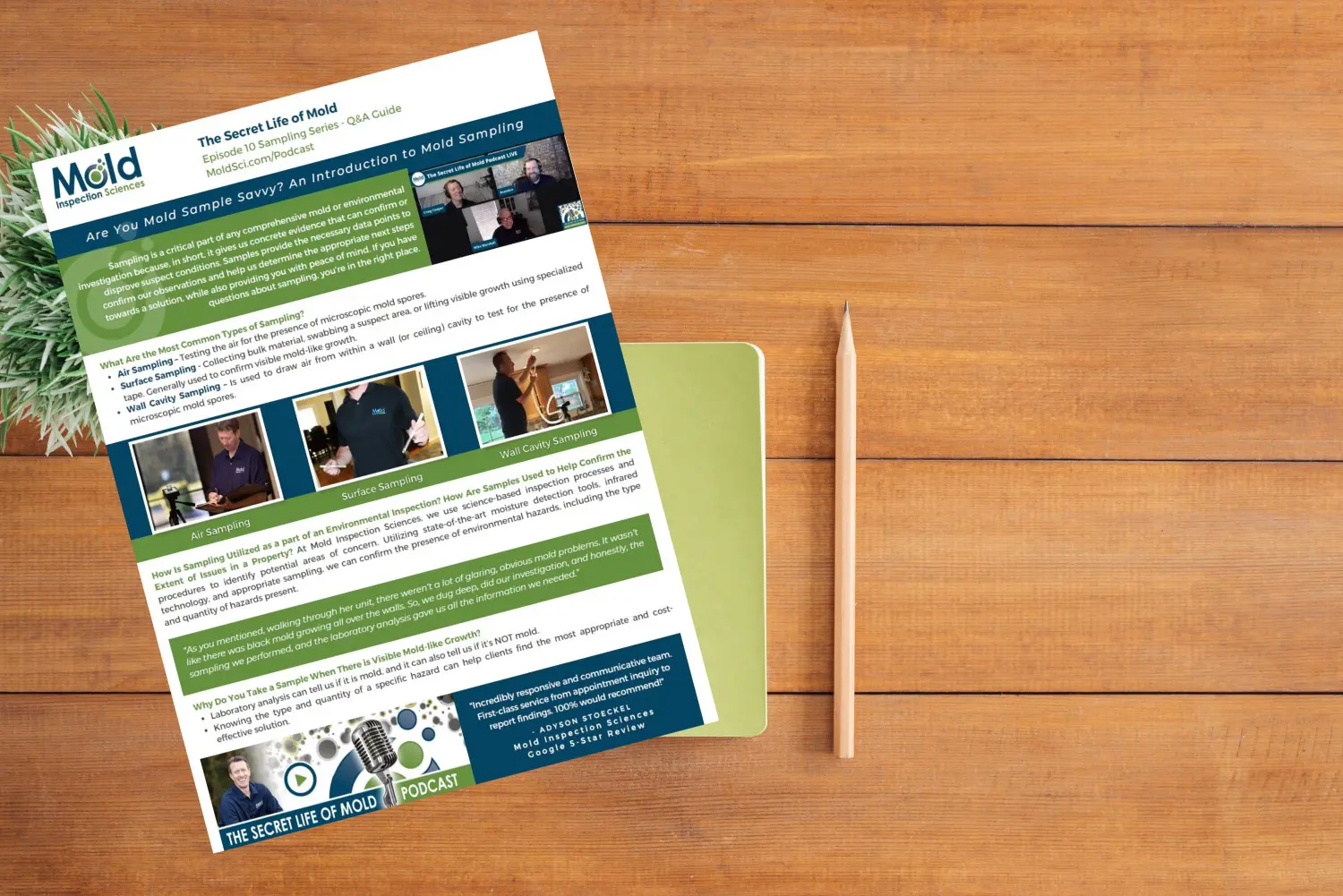
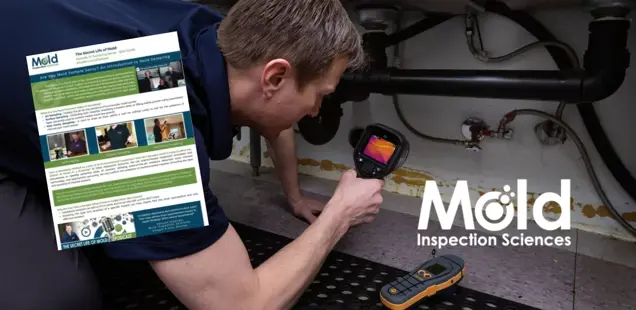
Our Sampling and Testing Question and Answers
We often get questions about how we determine which sample type to recommend, why we recommended a specific number of samples, and other questions about our sampling approach. Through the course of the assessment, our inspector will put together a Sampling Strategy specific to your property that will allow us to pinpoint problem areas, determine overall contamination levels, guide remediation efforts when needed, or in other cases rule out mold as a source of concern. The type of sample and number of samples recommended truly depend on the property and the conditions found during our assessment. If you have questions about the type of samples used or are wonder how and why specific recommendations are made read on to find your answers.
Jump to the Frequently Asked QuestionsOur Sampling Guides
Introduction to Mold Sampling
Introduction To Mold Sampling

- Sample Types What are the most common sample types? What are more specialized sample types?
- How Many Samples are Needed What is a "typical" investigation and how many samples should be collected?
- What are Some Pitfalls of Not Collecting Samples Samples can tell us much more than we can see with our eyes alone.
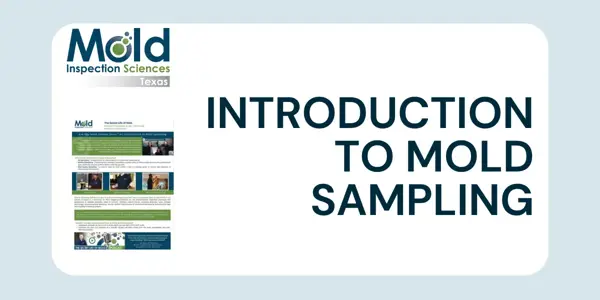
Standard Mold Sampling
Standard Mold Sampling

- What is standard sampling A review of air sampling, surface sampling, cavity sampling, and dust sampling
- What a sampling strategy should be There is no one size fits all approach
- The importance of an outside control sample It's the relative moldiness that's most important
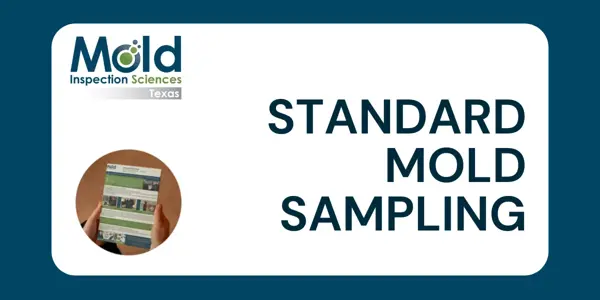
qPCR Mold Sampling
qPCR Mold Sampling

- What is qPCR sampling and analysis Testing that looks deeper by targeting the DNA of the mold sample
- Which molds does qPCR identify 36 of the molds most commonly associated with mold sensitivity
- The importance of using additional data qPCR sampling alone cannot give the complete picture of a property's condition
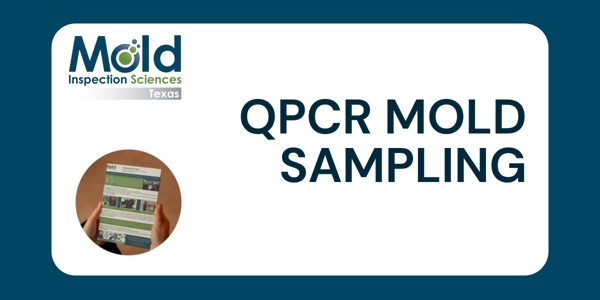
Specialty Sampling
Specialty Sampling

- Bacteria Sampling typically used when there is a contaminated water loss, such as sewage
- Water Sampling tests for common contamination in water systems
- Allergy testing addresses indoor allergens
- Safe Water Plans used by schools and required in some districts
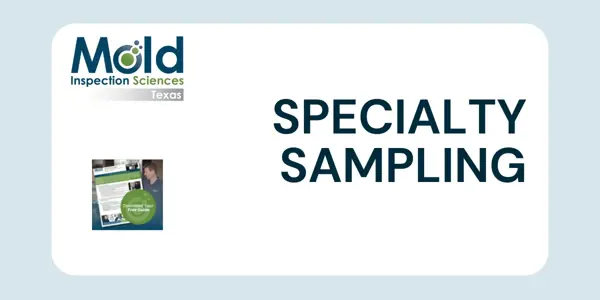
Our Sampling and Testing Question and Answers
We often get questions about how we determine which sample type to recommend, why we recommended a specific number of samples, and other questions about our sampling approach. Through the course of the assessment, our inspector will put together a Sampling Strategy specific to your property that will allow us to pinpoint problem areas, determine overall contamination levels, guide remediation efforts when needed, or in other cases rule out mold as a source of concern. The type of sample and number of samples recommended truly depend on the property and the conditions found during our assessment. If you have questions about the type of samples used or are wonder how and why specific recommendations are made read on to find your answers.
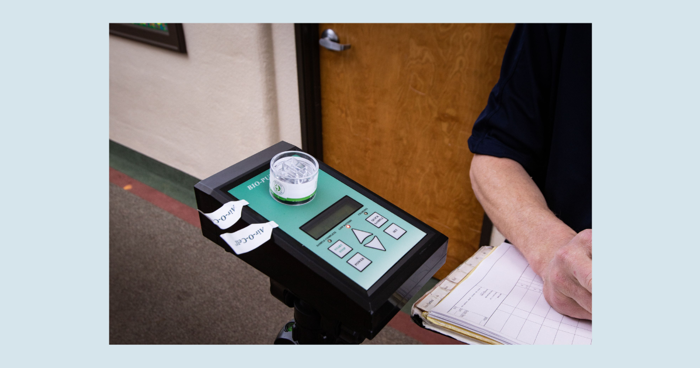
Frequently Asked Questions
What is standard sampling?
Standard mold sampling is the traditional method for analyzing samples, where direct examination is utilized via a microscope by a qualified mycologist to visually identify the presence and differentiate between different mold types. One of the most common type of sampling in the industry is air sampling. How and why is air sampling used?
- Air sampling is used to determine what types of mold spores are in the air and how much is present at that time.
- This type of sample is collected using a specialized air pump that draws the air through a spore trap which collects particulates from the air.
- Be aware. Air sampling isn’t a tell-all for a property. Air samples are used in combination with the conditions found during a mold investigation, other sample types, and the laboratory results to help get the big picture.
What are the most common types of sampling?
- Air Sampling – Testing the air for the presence of microscopic mold spores.
- Surface Sampling – Collecting of bulk material, swabbing a suspect area, or lifting visible growth using specialized tape. Generally used to confirm visible mold like growth.
- Wall Cavity Sampling – Is used to draw air from within a wall (or ceiling) cavity to again, test for the presence of microscopic mold spores.
How is sampling utilized as a part of an environmental inspection?
At Mold Inspection Sciences, we use science-based inspection processes and procedures to identify potential areas of concern. Utilizing state-of-the-art moisture detection tools, infrared technology, and appropriate sampling, we can confirm the presence of environmental hazards, including the type and quantity of hazard present.
Why are samples collected when there is visible mold like growth?
- Laboratory analysis can tell us if it is mold, and it can also tell us if it’s NOT mold.
- Knowing the type and quantity of a specific hazard can help clients find the most appropriate and cost-effective solution.
What other types of sampling are available?
- Dust Sampling – Used most commonly to check for various contamination levels during an inspection and in post-clearance inspections.
- qPCR Sampling – Gives overall contamination rating and history of the property. Effective when used in conjunction with our CIRS Protocol inspections.
- Bacteria Sampling – Used if contaminated water loss impacts a property, like sewage or other grey or black water events.
- Allergen Sampling – Testing for common allergens like cat, dog, cockroach, dust mite.
- Water Sampling – Used to determine water quality and assess conditions like bacteria, heavy metals, nitrates, nitrites, turbidity, pH, and others.
How many samples are needed for a typical investigation?
After 20-plus years of conducting investigations, we can honestly say, there is no “typical” investigation. It truly depends on the assessment, the property’s unique needs, and how those living, and working are impacted. The property conditions and suspected issues will dictate how many samples are appropriate for each investigation.
How do consultants recommend sampling? What is the process for determining a mold sampling strategy?
This is based on the property itself. Conditions play a substantial role in determining a sampling recommendation. Any area that’s impacted by some degree of moisture will warrant some degree of sample recommendation. At a minimum, an air sample will be recommended and if there is visible mold like growth, then surface samples and air samples to determine contamination are likely to be utilized.
What are some of the pitfalls of not collecting samples?
We don’t know what we don’t know. Samples can tell much more than what we can see with our eyes and confirm any suspect conditions. Sample testing is conducted by our accredited and experienced laboratory. The data we get from lab testing is used to confirm the suspect conditions we observe and, in some cases, to disprove a suspect condition., The more data we have, the better able we are to define the next steps to help return your property to normal.
Why is an outdoor control sample an important component of accurate sampling?
To properly assess the indoor conditions, we must first collect an outside control, or baseline sample. This is necessary because it is important to remember that airborne mold spores are everywhere, so even a home that does not have a mold “problem” will have some mold spores within the air. For a sample to be considered “normal” it should be somewhat consistent with the outside control sample taken that at that same day and time. In general, indoor spore counts should be roughly 75% of the outdoor counts and usually proportionately similar in terms of spore types.
Clients should receive a defined sampling strategy, here’s why
Sampling, done correctly, should be based on what a consultant finds during an investigation. There is no preset number of samples.
What is surface sampling? When is it used?
- Surface sampling is most commonly used when we observe mold like growth.
- Three most common collection methods are:
- Bulk sampling: A piece of material is extracted that may contain mold and is sent to the lab intact.
- Tape lift sampling: A specialized tape is used to lift the suspected mold like growth and is placed on a slide for laboratory analysis.
- Swab sampling uses a sanitary type of Q-Tip that is used to collect the suspected mold like growth for analysis.
What is cavity sampling?
- Cavity sampling is taking an air sample from an enclosed space, usually inside a wall or ceiling.
- A small hole is created, and a tube is placed within the space to collect an air sample.
When is it important to use dust sampling?
- Dust sampling is used when we need to know if the surfaces or contents within a space are contaminated.
- Beneficial for use on upholstered items.
- It is frequently utilized in post-clearance inspections, especially for our CIRS protocols – for clients who are very hypersensitive to environmental hazards.
Why is it important to collect an outside control sample?
- Mold is a natural part of the outdoor environment, and it is normal for even a “clean” home to have some mold present. Mold spores are always present outside and to a lesser degree inside a home. An outside sample is how we determine what’s normal for any given day. It serves as our baseline for comparison.
- Without this baseline, you’re inspecting in the blind because outdoor conditions always fluctuate. It is the relative moldiness of indoor air that can best inform us of a home’s condition.
What is qPCR sampling and analysis?
- It’s short for Quantitative Polymer Chain Reaction.
- The testing targets the DNA of the mold taking a deeper look at what may be
impacting a property. - Commonly referred to as ERMI analysis when used for mold samples.
- Tests for the DNA trace of 36 different mold species to reveal their presence and
concentration levels in a home.
What does ERMI stand for?
- Environmental Relevant Moldiness Index.
- Derived from a study done by the EPA in the early 2000s to help determine what might be baselines for
low, average, and high when completing qPCR testing. - Known as the ERMI Score System.
- Testing scale used to determine the overall mold contamination within a building.
Why should an ERMI score always be used with additional data?
- Over the years, independent environmental specialists (IDPs) began to rely solely on the EMRI scores when
evaluating homes instead of looking at the other contributing factors, such as individual mold types,
concentration levels, relative humidity, etc. The ERMI score should be used as one tool in our arsenal to complete
a comprehensive investigation. When used alone, an ERMI score has much less significance in determining what
the most effective next steps should be. - At Mold Inspection Sciences, we’ve compiled our own database, based on thousands of investigations, of average,
normal, and high, which allows us to give clients more detailed results and next steps. - The bottom line is that qPCR data and individual mold types are invaluable data for a comprehensive
investigation.
What is the HERTSMI Scoring System?
- Developed by one of the leading medical professionals in the medical end of the industry, Dr. Ritchie
Shoemaker. - Condensed and less comprehensive version of the qPCR sample test that only tests for five different types of
molds within a home. - Statistical data that proves when specific species of molds are present in certain concentrations. It can be used
to link the results with various health symptoms.
What is EMMA Testing?
- Not a commonly used analysis, but can provide another data point to help in determining the concentration
level of contamination. - Another type of qPCR testing known as the Environmental Mold and Mycotoxin Assessment.
- Tests at the DNA level for ten molds and 16 mycotoxins which are then tied to a urinalysis sample to pinpoint
whether or not exposure is happening inside the home.
When is water sampling usually completed for clients?
- Real estate transactions – when purchasing a home.
- It’s very important if a property uses well water because of hazards that may have leached into surrounding soils.
- In some locations around the U.S., testing is required for properties using well water.
- Properties using city water may also benefit from water testing, especially if the property is older – plumbing could contain lead, iron, and manganese.
- Water testing reveals water quality, including pH, turbidity (water clarity), E.coli, and other contaminants.
- Heavy metals are critical to test for. Their presence can result in the deposit of small amounts of minerals and irons into the bloodstream.
- Lead can trick the body into thinking that it is healthy calcium and result in deposits in bone material.
- If your home has older copper pipes, lead may still be a concern.
Mold Inspection Sciences also offer allergen testing
- While symptoms related to mold sensitivity are what we typically find, there are a variety of other allergens within living and working environments that may cause health issues too.
- Dust Mites are the most common allergy and asthma trigger in U.S. households.
- We most commonly rely on the Multiplex Array for Indoor Allergens (MARIA) analysis.
- Tests for things like dust mites, pet dander, and cockroaches.
- Note: If you haven’t changed your pillows recently, you might want to.
- 2021 Update: Up to 10% of a two-year-old pillow can be composed of dead mites and their droppings.
When is Bacteria sampling used?
- This is a common form of sampling typically related to sewage losses (also known as black water loss).
- It is used to determine if bacteria is present and what types if so.
- E.coli and total coliforms are the two primary bacteria we test for. MIS and MISTX can also test for a broader spectrum of bacteria if conditions indicate they may be present.
What about Asbestos Testing?
- Asbestos is a naturally occurring mineral whose heat resistance sparked its use in consumer products like shingles and insulation.
- It is still used today in things like automotive brake pads.
- Asbestos can be linked as the causes of mesothelioma and other cancers.
- Different types of asbestos – friable and non-friable. Friable is considered more dangerous because it can be easily crumbled and inhaled.
- It’s not extremely dangerous unless it’s disturbed. If you’re doing any type of construction or demolition, especially in older buildings, you want to have asbestos testing done.
- It was banned from many products in 1989 and is currently highly regulated in the U.S.
- DO NOT try and test for asbestos yourself!
- Note: Mold Inspection Sciences and Mold Inspection Sciences Texas offers third-party testing and is entirely independent of all mitigation or removal regarding all environmental investigations, effectively avoiding any conflict of interest.
Safe water plans for schools
- Is the water in your school district safe? 10,000 schools in Texas alone have been identified with lead pipes connected to municipal drinking water systems.
- Children who consume contaminated water may absorb lead directly into their bones because their bones are more porous and still growing.
- Ask your schools if they have a safe water plan in place.
Is there a safe level of lead in water?
- According to the EPA standard, the safe amount is .015 micrograms per liter; however, it should be zero in our opinion.
If my city’s annual water report is clean, is my home safe?
- In short, no. While cities are required to test their reservoirs or holding tanks and provide that data to the public, their report does not necessarily mean the same for your home. Many factors separate your home’s pipes from your city’s, meaning it’s important to get your own testing done at the tap.

